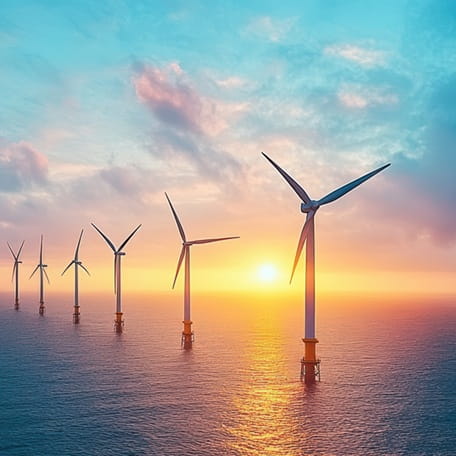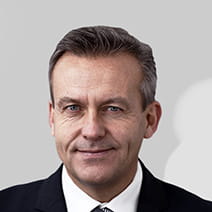I recently travelled to the IFAT Water Trade show in Munich, gaining a first-hand perspective of the portfolio of products from companies involved in the water industry that we own and the broader investment landscape.
So-called ‘negative water externalities’ form one of the key areas across the sustainable investment landscape that is less well understood by the market. These environmental and social impacts result from poor water quality, underinvestment in testing and disinfection systems, insufficient water recycling and an ageing water infrastructure. In the Sustainable Investment team, we look to invest in companies that are providing solutions to these externalities, that is, not the water companies themselves, but solution providers for municipal, industrial, commercial and residential end uses. The stats are shocking:
- Each year, more than 860 billion gallons of wastewater escapes US sewage systems.
- PFAS – synthetic chemicals found in consumer products – are potentially present in the blood of 97% of the US population[1].
- Closer to home for those in the UK, 14.2 billion litres of sewage were pumped into the river Thames in central London last year[2].
Couple that with improving quality demonstrated in the fundamentals, with multiple players seeing strong improvements in margins and returns over the past few years, the investment landscape for companies looking to address the unmet needs of the water industry is becoming increasingly interesting.
Wastewater is still released untreated in vast quantities across all regions

Source: Berenberg, Jones et al, Earth System Science Data, 2021, share of wastewater untreated=1-(wastewater treated/wastewater production)
The competitive advantage we look for in companies in the water industry is a low tolerance to failure, being a high quality, reliable equipment provider. Water is the only utility with immediately life-threatening consequences if things go wrong, so customers tend to be risk averse. The second competitive advantage we look for in this space comes from companies with a strong distribution channel. Companies that control both the production and supply of their products – known as vertically integrated distribution – have an advantage if they leverage the opportunity to prove the water, energy and cost savings to their customers. We look for companies excelling in this through lifecycle water or energy saving calculators.
A trap some investors fall into is assuming that there are large differences in the technology between some of the large-cap players in water exposed hardware. In reality, a Veralto UV disinfection system is very similar to one from Xylem. However, some equipment shows more variability: under the Hach brand, Veralto’s monitoring equipment tests over 100 parameters (an example of one parameter is a type of bacteria such as e coli, legionella, etc.). The company claims that this is 2-3 times more parameters than the next largest competitor. We initiated a position in Veralto in October 2023, post the spin-off from Danaher and so far, it has been a strong performer for our Global and US funds, up over +40%.
Currents of change – the structural tailwinds driving growth
In developing countries, more than 45 million cubic metres of water are lost through leaks every day [3].
Some of the most compelling companies in the water space are manufacturing integrated solutions through software that gives advanced high-level monitoring of hardware. Software that connects to pipes can give municipalities insight into where exactly leaks are occurring, for example. This leads to faster diagnoses of deteriorating pipes or acute leaks and longer-term cost savings for customers. One company I met with in Munich showed me its version of this software in practice, displaying a graph with two coloured lines: one in blue for ‘non-revenue water’ – water that has been cleaned and purified but not consumed – versus a green line for what’s actually being used. There has been strong uptake for solutions like this in Spain so far and it is being rolled out more broadly. Companies have the opportunity to differentiate in software more than in commoditised pipes or generic pumps, and, as a result, the leaders command particularly high margins.
How industrial trends are driving growth
The structural growth extends far beyond municipality-driven demand. One such example is that water industry names are indirect beneficiaries of secular industrial trends, namely artificial intelligence (AI), semiconductors, data centres and EV batteries, enabling us to spread our investment risk across these cyclical industries.
Take the AI transition for example. Microsoft, Meta and Alphabet have all set targets to become water positive by 2030; in other words, to replenish more water than is consumed. To achieve this, disinfection and testing equipment are needed. The high-water consumption of data centres is driven by their extensive cooling requirements. Each Chat GPT search, for example, uses a gallon of water. This bodes well for our Global and US portfolio holding Ecolab, which sells water equipment to data centres, among other verticals.
Meanwhile, In April, we saw the Biden administration implementing new limits on PFAS in drinking water to four parts per trillion, the most ambitious of the major geographies. This has come down from 70 parts per trillion between 2016-2022. There continues to be an arms race to develop scalable PFAS destruction technology.
Furthermore, capturing and treating stormwater is a +$15 billion market opportunity in the US alone. There are more than 55,000 miles of pipeline in the US system today that are barely maintaining a 200-year replacement cycle, posing leakage issues and sub-optimal storm and wastewater management.[4] To address the renewal of pipes, pumps, tanks and treatment plant systems, $15 billion of Federal infrastructure funding has been approved for state projects[5]. Europe has so far been slower to adopt supportive regulation, with pockets of outliers. In 2023, we saw the UK government lift the £250,000 cap on civil penalties relating to water pollution, making the stakes higher.
I will leave you with one fact. Only 0.25% of the planet's water is usable. The rest is salt water, polluted or locked up in polar ice caps, glaciers and permafrost.[6] We need to improve the recycling of water back into the system, improve the energy efficiency of doing so, upgrade an ageing water infrastructure and prepare for an increasing frequency of severe weather events. This provides a compelling investment opportunity.
KEY RISKS
Past performance is not a guide to future performance. The value of an investment and the income generated from it can fall as well as rise and is not guaranteed. You may get back less than you originally invested.
The issue of units/shares in Liontrust Funds may be subject to an initial charge, which will have an impact on the realisable value of the investment, particularly in the short term. Investments should always be considered as long term.
The Funds managed by the Sustainable Future Team:
Are expected to conform to our social and environmental criteria. May hold overseas investments that may carry a higher currency risk. They are valued by reference to their local currency which may move up or down when compared to the currency of a Fund. May hold Bonds. Bonds are affected by changes in interest rates and their value and the income they generate can rise or fall as a result; The creditworthiness of a bond issuer may also affect that bond's value. Bonds that produce a higher level of income usually also carry greater risk as such bond issuers may have difficulty in paying their debts. The value of a bond would be significantly affected if the issuer either refused to pay or was unable to pay. May encounter liquidity constraints from time to time. The spread between the price you buy and sell shares will reflect the less liquid nature of the underlying holdings. May invest in companies listed on the Alternative Investment Market (AIM) which is primarily for emerging or smaller companies. The rules are less demanding than those of the official List of the London Stock Exchange and therefore companies listed on AIM may carry a greater risk than a company with a full listing. May invest in smaller companies and may invest a small proportion (less than 10%) of the Fund in unlisted securities. There may be liquidity constraints in these securities from time to time, i.e. in certain circumstances, the fund may not be able to sell a position for full value or at all in the short term. This may affect performance and could cause the fund to defer or suspend redemptions of its shares. May, under certain circumstances, invest in derivatives, but it is not intended that their use will materially affect volatility. Derivatives are used to protect against currencies, credit and interest rate moves or for investment purposes. There is a risk that losses could be made on derivative positions or that the counterparties could fail to complete on transactions. The use of derivatives may create leverage or gearing resulting in potentially greater volatility or fluctuations in the net asset value of the Fund. A relatively small movement in the value of a derivative's underlying investment may have a larger impact, positive or negative, on the value of a fund than if the underlying investment was held instead. The use of derivative contracts may help us to control Fund volatility in both up and down markets by hedging against the general market. The use of derivative instruments that may result in higher cash levels. Cash may be deposited with several credit counterparties (e.g. international banks) or in short-dated bonds. A credit risk arises should one or more of these counterparties be unable to return the deposited cash. Outside of normal conditions, may hold higher levels of cash which may be deposited with several credit counterparties (e.g. international banks). A credit risk arises should one or more of these counterparties be unable to return the deposited cash. May be exposed to Counterparty Risk: any derivative contract, including FX hedging, may be at risk if the counterparty fails. Do not guarantee a level of income.
The risks detailed above are reflective of the full range of Funds managed by the Sustainable Future Team and not all of the risks listed are applicable to each individual Fund. For the risks associated with an individual Fund, please refer to its Key Investor Information Document (KIID)/PRIIP KID.
DISCLAIMER
This is a marketing communication. Before making an investment, you should read the relevant Prospectus and the Key Investor Information Document (KIID), which provide full product details including investment charges and risks. These documents can be obtained, free of charge, from www.liontrust.co.uk or direct from Liontrust. Always research your own investments. If you are not a professional investor please consult a regulated financial adviser regarding the suitability of such an investment for you and your personal circumstances.
This should not be construed as advice for investment in any product or security mentioned, an offer to buy or sell units/shares of Funds mentioned, or a solicitation to purchase securities in any company or investment product. Examples of stocks are provided for general information only to demonstrate our investment philosophy. The investment being promoted is for units in a fund, not directly in the underlying assets. It contains information and analysis that is believed to be accurate at the time of publication, but is subject to change without notice. Whilst care has been taken in compiling the content of this document, no representation or warranty, express or implied, is made by Liontrust as to its accuracy or completeness, including for external sources (which may have been used) which have not been verified. It should not be copied, forwarded, reproduced, divulged or otherwise distributed in any form whether by way of fax, email, oral or otherwise, in whole or in part without the express and prior written consent of Liontrust.
















